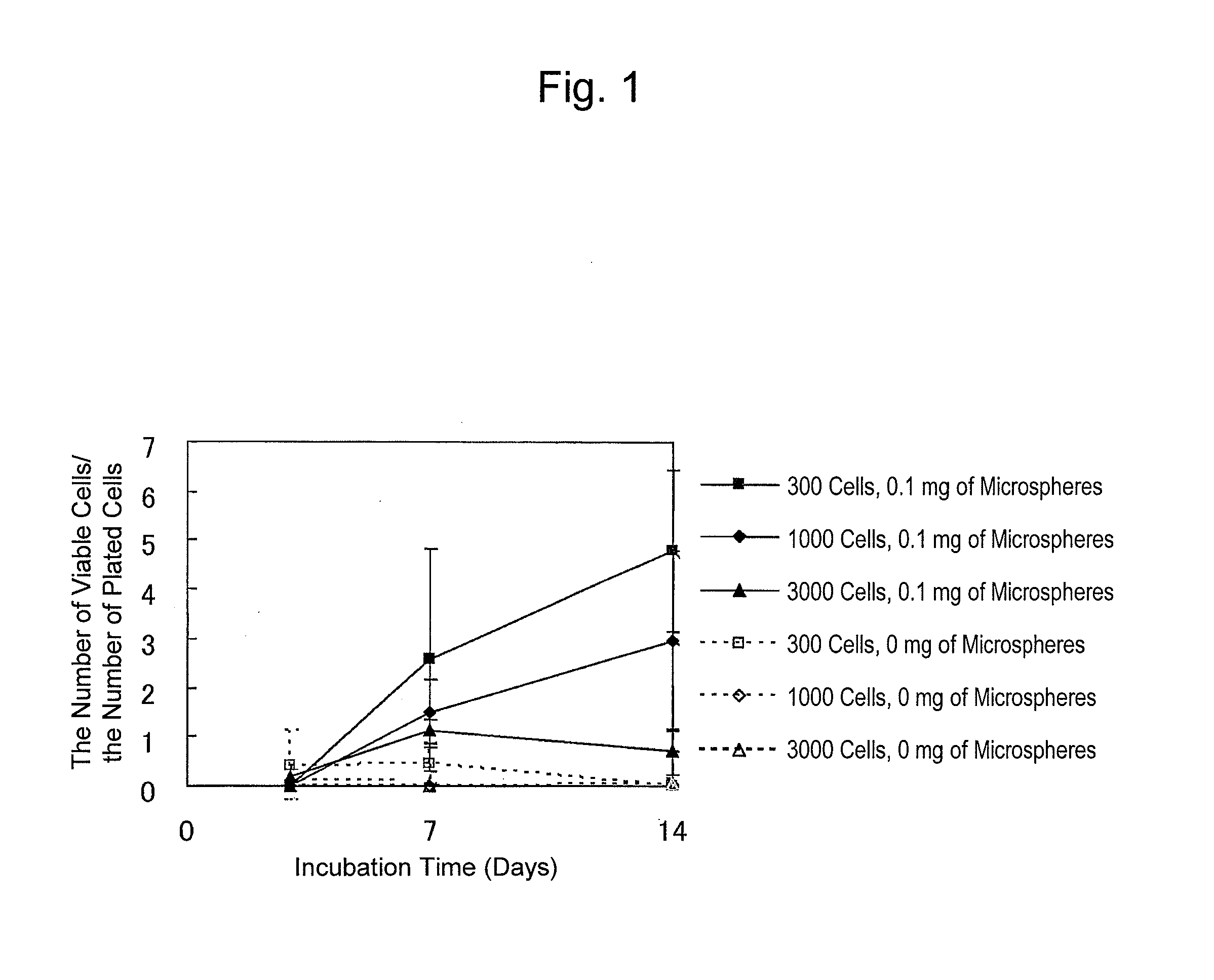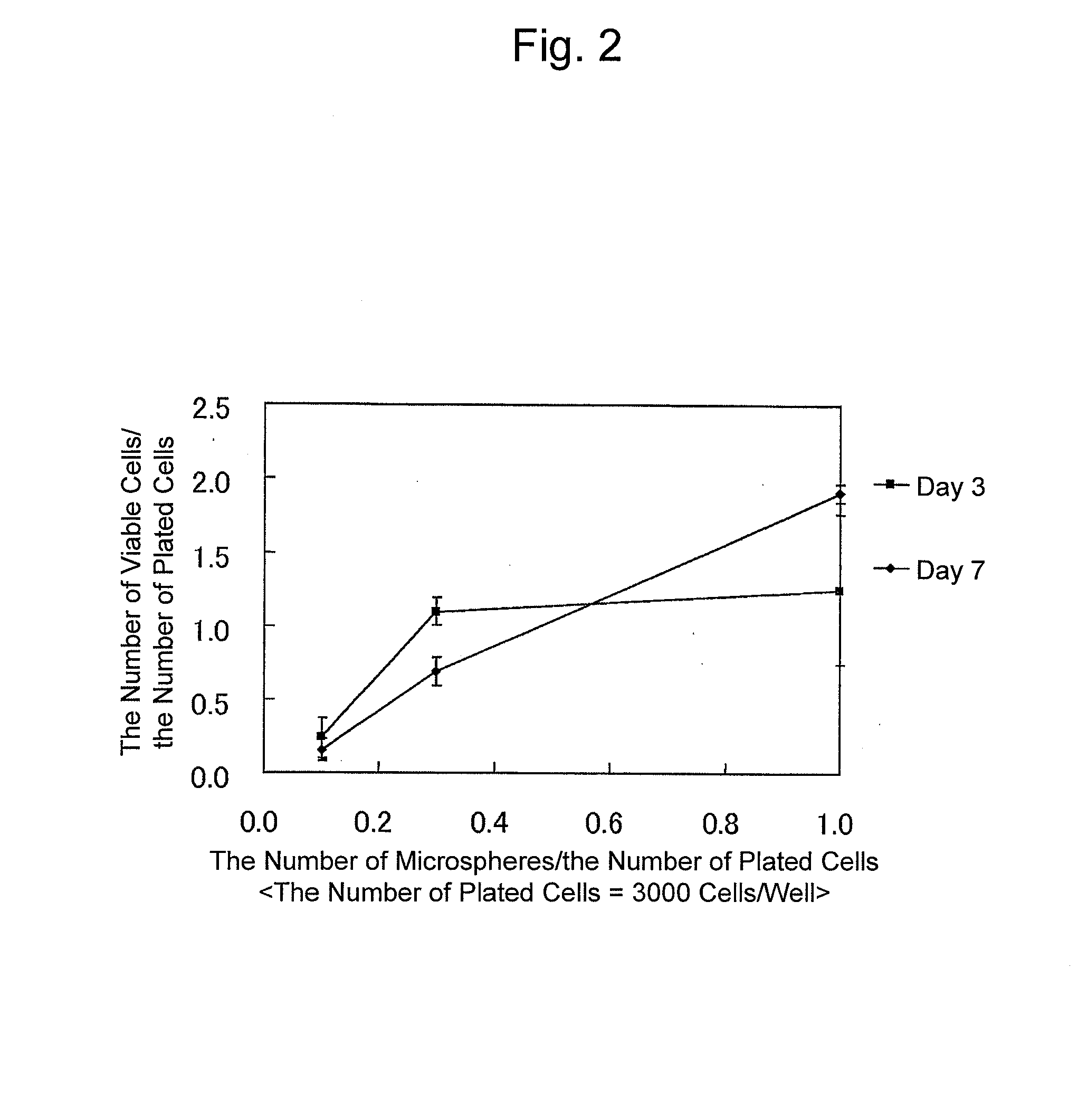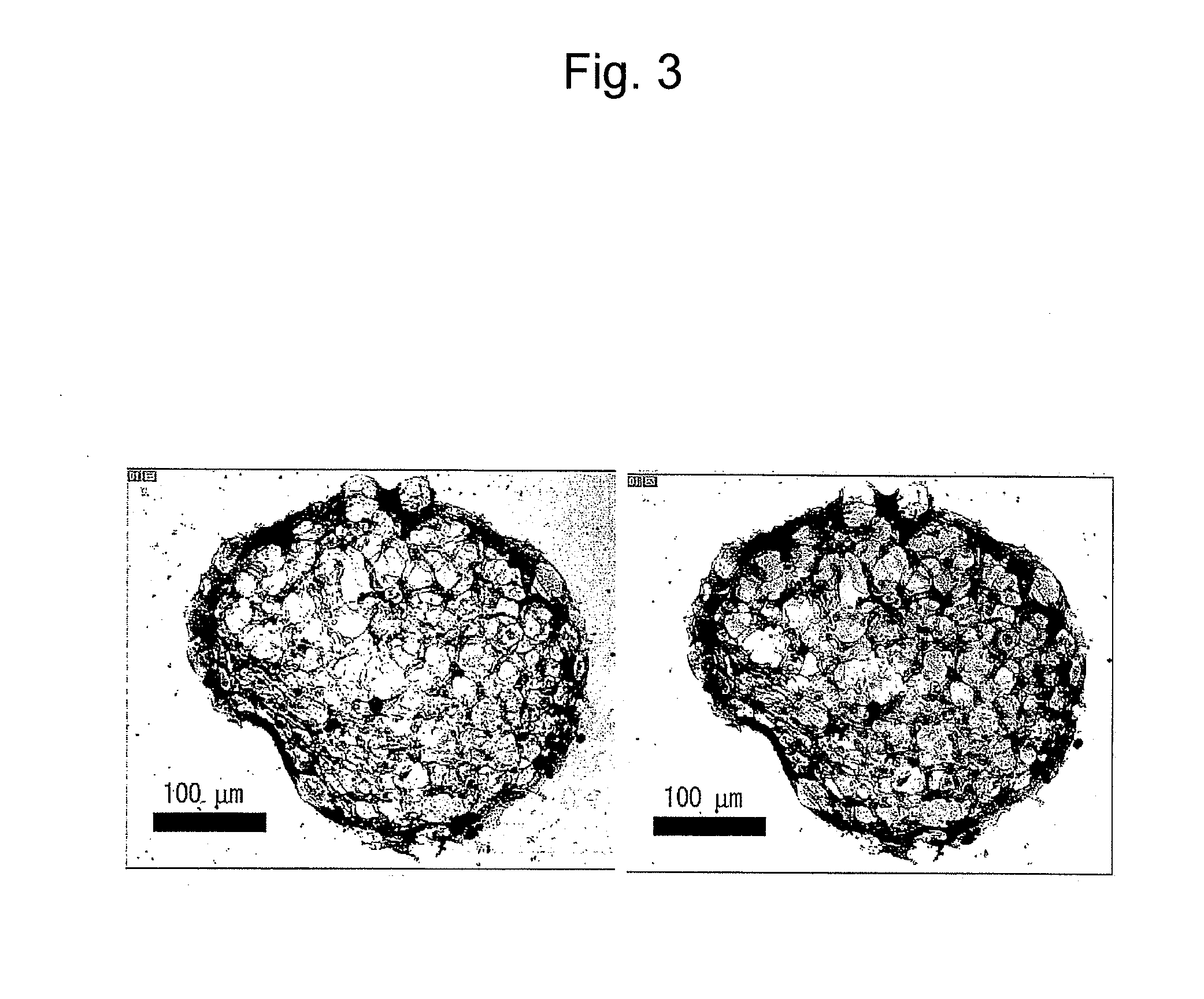Microsphere-Containing Cell Aggregate
- Summary
- Abstract
- Description
- Claims
- Application Information
AI Technical Summary
Benefits of technology
Problems solved by technology
Method used
Image
Examples
example 1
[0036]A fixed stirring motor (THREE-ONE MOTOR, manufactured by Shinto Scientific Co., Ltd.) was fitted with a Teflon(R)-made stirring propeller, and all were fixed to a 1000-ml round-bottom flask. Then, 375 ml of olive oil was added to the flask, and 10 ml of an alkali-treated gelatin solution (the concentration of about 10%) having an isoelectric point of 4.9 was added dropwise while stirring at 37° C. and 420 rpm to prepare a W / O emulsion. After the emulsion was stirred for 10 minutes, the flask was cooled to 4° C. and the emulsion was then stirred for 30 minutes. After cooling, 100 ml of acetone was added and the mixture was stirred for 1 hour. Then, centrifugation was performed to collect gelatin hydrogel microspheres. The collected hydrogel microspheres were washed with acetone and further with 2-propanol to yield uncrosslinked gelatin hydrogel microspheres. These hydrogel microspheres were dried and stored at 4° C.
[0037]Thereafter, 500 mg of the dried uncrosslinked gelatin hyd...
example 2
[0040]By changing a ratio of the number of microspheres to the number of MSCs, a cell aggregate was produced in a similar manner. As a result, when a ratio of the number of microspheres / the number of cells was 0.3 or more, the viable cell count increased with increasing culture period (FIG. 2). That is, as a ratio of microspheres / cells became larger, the cell viability increased. This result seems to be due to the presence of the microspheres within the cell aggregate. Since substance diffusion between the inside and the outside of the aggregate increases, nutrition and oxygen supply to the cells and waste product excretion improve.
example 3
[0041]In a manner similar to that of Example 2, a microsphere-containing MSC aggregate was produced at a ratio of the number of microspheres / the number of cells of 0.5. BrdU incorporation into this aggregate was investigated. At day 6 of cell culture, BrdU was added to a medium. At day 7, a cell aggregate was collected, and frozen sections were prepared. A section having a maximum area through an aggregate center portion was subjected to immunostaining using an anti-BrdU antibody. The stained portion represented a site where BrdU was highly incorporated into a nucleus. This indicated proliferation of cells. The results demonstrated that BrdU was incorporated into cells on the surface and inside of the aggregate. Accordingly, the cells residing inside the aggregate were found to proliferate (FIG. 3). On the other hand, a microsphere-free MSC aggregate was cultured under the identical conditions. Then, the cell aggregate was formed, and BrdU incorporation was investigated. The results...
PUM
 Login to View More
Login to View More Abstract
Description
Claims
Application Information
 Login to View More
Login to View More - R&D
- Intellectual Property
- Life Sciences
- Materials
- Tech Scout
- Unparalleled Data Quality
- Higher Quality Content
- 60% Fewer Hallucinations
Browse by: Latest US Patents, China's latest patents, Technical Efficacy Thesaurus, Application Domain, Technology Topic, Popular Technical Reports.
© 2025 PatSnap. All rights reserved.Legal|Privacy policy|Modern Slavery Act Transparency Statement|Sitemap|About US| Contact US: help@patsnap.com



